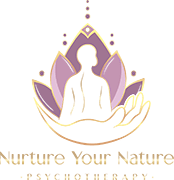Introduction: When Words Become Armor
If you have ever walked away from an argument thinking, “Why did I say that?” or “How did a simple disagreement spiral so fast?” you are certainly not alone. Our everyday conversations are full of micro-moments in which tone, phrasing, and body language either foster connection or ignite conflict. In psychotherapy, we call this your conflict language—the habitual patterns of speech, emotional tone, and non-verbal cues you default to when tension rises. Identifying your conflict language is more than an exercise in self-awareness; it is a crucial step toward healthier relationships, improved mental health, and a more compassionate way of living.
At Nurture Your Nature Psychotherapy, a practice serving the vibrant borough of Brooklyn through in-person and Online Therapy Brooklyn services, we have watched countless clients transform their lives by decoding and refining their conflict language. Whether you are looking for Brooklyn Therapy to strengthen a romantic partnership, improve collegial teamwork, or simply feel calmer during heated exchanges, understanding how you speak in conflict offers a roadmap to change.
Defining Conflict Language
Conflict language encompasses the explicit words, implicit signals, and emotional subtext that arise when two or more people find themselves at odds. It combines:
-
Word Choice – Do you say “You never listen” or “I feel unheard”?
-
Tone & Volume – Is your voice sharp, sarcastic, or eerily calm?
-
Non-Verbal Cues – Eye rolls, crossed arms, trembling hands, or forced smiles.
-
Timing – Blurting out grievances in the heat of the moment versus pausing.
-
Underlying Intent – A desire to dominate, withdraw, placate, or resolve.
Just as languages like English, Spanish, and Mandarin follow recognizable structures, conflict languages break down into several identifiable dialects. Before we explore these in depth, it is important to understand why our brains cling to certain conflict scripts.
The Neuroscience of Conflict Scripts
From a biological standpoint, conflict triggers a threat-detection system deep in the brain—primarily the amygdala. When aroused, the amygdala sends signals that flood the body with stress hormones (cortisol and adrenaline), priming us for fight, flight, freeze, or fawn responses. This survival circuitry is astonishingly fast, often hijacking rational thought before the prefrontal cortex has a chance to weigh in. As a result, we resort to pre-programmed language patterns:
-
Fight → Aggressive or Blaming Language
-
Flight → Avoidant or Dismissive Language
-
Freeze → Stonewalling or Silent Withdrawal
-
Fawn → People-Pleaser or Placating Language
These reflexes once kept our ancestors alive; today they can derail board-meetings, friendships, and marriages. Brooklyn Psychotherapy clients often remark that they know what they should say but cannot access calmer words in the moment. Therapy focuses on closing this gap between knowledge and action.
Five Common Conflict Languages
Below are five broad categories we see at Nurture Your Nature Psychotherapy. You may recognize yourself in more than one, depending on context and stress levels.
The Critic
Hallmarks: Absolutes (“always,” “never”), accusations, sarcasm, finger-pointing.
Purpose: Regain control by highlighting another’s flaws.
Hidden Fear: Powerlessness or rejection.
Example: “You’ve never taken our budget seriously. Why should I trust you now?”
The Defender
Hallmarks: Rapid justifications, counter-accusations, turning blame outward.
Purpose: Protect self-esteem by deflecting responsibility.
Hidden Fear: Shame or exposure of inadequacy.
Example: “I only snapped because you kept interrupting me.”
The Avoider
Hallmarks: Changing the subject, humor as diversion, vague affirmations.
Purpose: Minimize discomfort by sidestepping friction.
Hidden Fear: Emotional overwhelm or abandonment.
Example: “Let’s not get into this now—want to grab coffee instead?”
The Stonewaller
Hallmarks: Silence, crossed arms, staring at a phone, leaving the room.
Purpose: Self-protection by shutting down emotional input.
Hidden Fear: Being flooded by anger or sadness.
Example: (shrugs silently, refuses eye contact, exits)
The Peacemaker
Hallmarks: Immediate apologies, over-validating others, conceding quickly.
Purpose: Preserve connection at any cost.
Hidden Fear: Disapproval or conflict escalation.
Example: “You’re right, it’s all my fault; let’s just move on.”
Remember, no conflict language is inherently “bad.” Each evolved to serve a protective function. The goal of therapy is not to judge the dialect you learned in childhood but to expand your vocabulary for more effective communication.
Cultural and Familial Roots of Conflict Language
-
Family of Origin: Children absorb parental conflict styles long before they understand syntax. If a parent shouted, a child may mirror volume to feel heard later in life.
-
Neighborhood and Community: Fast-paced urban environments like Brooklyn encourage direct speech; some cultures value indirectness.
-
Gender Norms: Social conditioning may label assertiveness “bold” for men but “abrasive” for women, shaping different conflict expressions.
-
Trauma History: Past abuse can wire the nervous system to anticipate danger, tilting language toward hyper-vigilance.
-
Digital Age: Texting removes vocal tone, often amplifying misinterpretations and leading to escalating conflict.
How to Identify Your Conflict Language
Journaling the Trigger-Reaction Cycle
After any disagreement, write down:
-
Situation: Where were you? Who else was present?
-
Trigger (thought or word): “He rolled his eyes.”
-
Body Sensations: racing heart, clenched jaw, numbness.
-
Emotions: anger, shame, fear.
-
Words Spoken: “I guess you think I’m stupid.”
-
Outcome: slammed door, lingering resentment, or mutual clarity.
Patterns become clearer after a week of entries.
Partner or Peer Feedback
Others may spot your conflict language faster than you can. Ask trusted friends, family members, or a Brooklyn Therapist to note phrases or tones they associate with you during tension.
Therapy Exercises
At Nurture Your Nature Psychotherapy, we employ role-playing, video feedback, and cognitive restructuring. Online platforms make these tools accessible via Online Therapy Brooklyn, allowing you to practice in your natural environment.
The Cost of Unconscious Conflict Language
-
Relationship Erosion: Chronic criticism or avoidance chips away at intimacy.
-
Workplace Fallout: Defensive language can sabotage team morale and promotions.
-
Mental Health Strain: Persistent adrenaline surges heighten anxiety, depression, and even cardiovascular risk.
-
Modeling for Children: Kids emulate adult conflict habits, perpetuating cycles across generations.
A brief disagreement is not the issue; it is prolonged, unresolved tension that causes damage. Mindful communication is therefore not merely polite—it is protective.
Shifting from Reactive to Responsive Communication
The Pause Technique
Take three deep breaths before responding. Those five seconds give the prefrontal cortex time to override knee-jerk reactions.
Name the Emotion
Replacing “You’re impossible” with “I feel frustrated” instantly lowers defensiveness. This is a core skill taught in Brooklyn Therapy sessions.
Use “I” Statements
Structure: I feel [emotion] when [specific behavior] because [impact], and I need [request].
Example: “I feel sidelined when decisions are made without consulting me because collaboration matters to our project. I need us to schedule check-ins.”
Non-Violent Communication (NVC)
Developed by Marshall Rosenberg, NVC combines observation, feelings, needs, and requests. Practicing this framework rewires default conflict language toward empathy.
Future-Focused Agreements
Instead of revisiting past grievances, collaborate on concrete, realistic next steps. This shifts the dialogue from blame to problem-solving.
Practical Exercises to Reinforce Change
-
Daily Micro-Check-Ins: Share one gratitude and one grievance with a partner in two minutes each, promoting emotional fluency.
-
Mirror Reading: Practice difficult phrases in front of a mirror to observe facial tension and adjust tone.
-
Voice Recording Playback: Record a heated discussion (with consent) and replay after cooling off. Note points where tone intensified.
-
Mind-Body Scan: Guided meditations train you to notice bodily cues—often the first sign your conflict language is about to surface.
-
Empathy Journaling: Write a paragraph from the other person’s perspective following a disagreement. This cultivates cognitive empathy, softening language.
Integrating Mindfulness and Somatic Awareness
Conflict language does not exist solely in the mind—it is rooted in the body. Somatic therapies emphasize sensing muscular tension, posture shifts, and breath patterns that precede harsh words. Techniques include:
-
Progressive Muscle Relaxation
-
Yoga or Qi-Gong
-
Eye Movement Desensitization and Reprocessing (EMDR) for trauma-linked conflicts.
By coupling cognitive work with bodily regulation, clients reach sustainable change faster.
Leveraging Technology for Conflict Transformation
-
Text Analysis Apps: Some communication tools flag hostile phrasing before you hit send.
-
Virtual Reality (VR) Role-Play: Emerging VR therapy immerses you in simulated conflicts to practice new language.
-
Telehealth Platforms: Our Online Therapy Brooklyn sessions incorporate screen-sharing to annotate dialogue scripts in real time.
When to Seek Professional Help
Consider professional guidance from a licensed Brooklyn Therapist if you notice:
-
Repetitive patterns of escalating conflict across settings.
-
Physical symptoms (headaches, stomach issues) tied to disagreements.
-
Thoughts of hopelessness about certain relationships.
-
Feedback from colleagues or loved ones that your communication feels “toxic” or “intimidating.”
At Nurture Your Nature Psychotherapy, we offer individual, couples, and group therapy, combining evidence-based modalities such as Cognitive-Behavioral Therapy, Emotionally Focused Therapy, and Somatic Experiencing to tailor treatment to your conflict language.
Frequently Asked Questions
Q: Can conflict language change permanently?
A: Yes. Neuroplasticity allows the brain to create new pathways with deliberate practice. Research shows consistent therapeutic work rewires emotional responses within months.
Q: Is conflict language the same as communication style?
A: They overlap, but conflict language is specific to high-tension scenarios. You might be a warm communicator in casual settings yet become defensive during criticism.
Q: Is Online Therapy Brooklyn as effective as in-person sessions?
A: Numerous studies confirm teletherapy’s effectiveness, especially when therapists use interactive tools such as role-play and screen-share exercises.
Action Plan: Your First Thirty Days
| Week | Focus | Daily Practice |
|---|---|---|
| 1 | Awareness | Journal triggers and reactions; no edits. |
| 2 | Pause & Name | Insert three-breath pause, label feelings aloud. |
| 3 | I-Statements | Convert two critical remarks per day into needs-based requests. |
| 4 | Future-Focus | For each conflict, propose one collaborative next step before ending conversation. |
Print this table and post it near your workstation or mirror. Consistency beats intensity.
Conclusion: Toward a More Compassionate Vocabulary
Language has the power to wound or to heal, to widen divides or to weave connections. Your conflict language is not destiny; it is a learned script awaiting revision. By recognizing patterns, honoring underlying fears, and practicing mindful responses, you can transform volatile exchanges into opportunities for growth. Brooklyn Therapy offers a culturally attuned, evidence-based path forward—whether you prefer in-office sessions with a Brooklyn Therapist or the flexibility of Online Therapy Brooklyn.
At Nurture Your Nature Psychotherapy, we believe every individual holds the capacity to rewrite their conflict dialogue, thereby nurturing healthier relationships and a more peaceful inner life. If you are ready to change the conversation, we are ready to help you find the words. Ready to take the first step? Reach out today and Schedule your Appointment Online Now or Call Us at (646) 470-4174 to get started Today!














